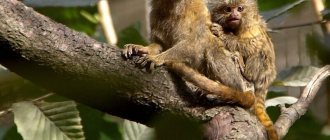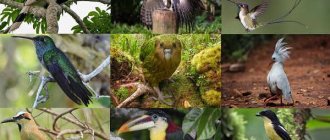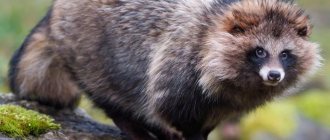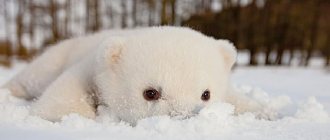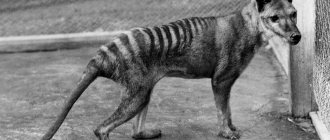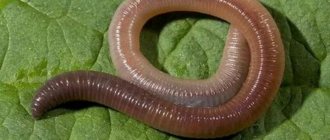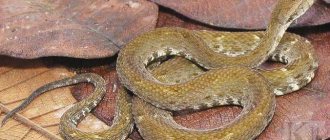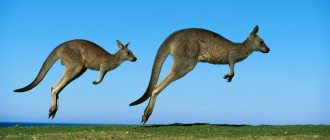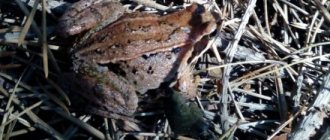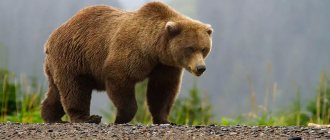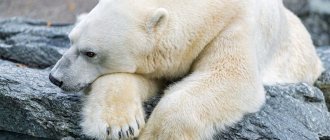Society05/22/2013
“Our world is complex and vulnerable, like a spider’s web. Touch one web, and all the others will tremble. And we don’t just touch the web, we leave gaping holes in it” - the words of the great English scientist J. Durrell, who lived in the 20th century. In the 21st century, man is already openly waging a biological battle with the outside world.
Nature is unique. Extinct species of animals are unique, and future generations will never see them with their own eyes. What will we leave to our descendants? Stuffed animals in museums and bones in the ground? Do not think that the animal world is exterminated only with the help of guns and traps. Various changes are constantly taking place on our planet, from minor to global. The Soviet Union also made efforts in this dirty business: one only has to remember the loud calls: “let's turn back the Siberian rivers,” which added several species of extinct animals to the Red Book, and brought others to the brink of extinction. Deforestation, pollution of the environment with waste, climate change as a result of human activity - all this has a detrimental and destructive effect on the animal world. Man unwittingly deprives animals and birds of their natural habitats and feeding areas. And if we add to this the irrational hunting of animals and poaching, then the situation is simply catastrophic. Some animals are on the verge of extinction. For now we can still see them in zoos, nature reserves and national parks. I would like to believe that through the efforts of conscious, active participants in the struggle to save our planet, we will preserve the unique and original animal world.
Snow leopard or snow leopard
A native of the highlands, the snow leopard is sometimes called an icon of the wasteland or a mystical beast. It is rare that anyone manages to observe a snow leopard in nature; only traces of its vital activity indicate its invisible presence in the mountains. No one knows how many snow leopards actually remain on the planet. The numbers range from 4 to 7 thousand, however, these are very rough estimates. The World Red Book lists the snow leopard as an endangered species. In Russia, there are no more than a hundred snow leopards. The snow leopard is usually found at an altitude of 2000 to 4000 m above sea level. He was seen several times in the Himalayas, at an altitude of more than five and a half kilometers. Harsh winters in the mountains, dangerous cliffs and rocky outcrops are not scary for the animal - here the snow leopard feels at home. Its body is well adapted for movement along mountain slopes, and its magnificent fur perfectly protects from frost. The animal’s wonderful fur has become the reason for increased attention from poachers. Increased demand for pelts and their high price have led to constant human persecution, which has significantly reduced the snow leopard population.
Savannah elephant
This forest elephant, recognized as the largest mammal on the planet, belongs to the section of vulnerable animals. And man is entirely to blame for this - historically, this species of elephant was exterminated for ivory, meat, skin, and even a tassel on the tail. At the moment, its population remains at around 400 thousand individuals.
Ussurian tiger
A representative of the felines, the Ussuri tiger, is listed in the Red Book due to its small numbers. According to various sources, there are from 450 to 500 individuals in Russia. A certain number of the Ussuri tiger, sometimes called the Altai, Siberian, Amur, North China or Manchurian tiger, lives in China - no more than 40 - 50 individuals. The Ussuri tiger is the only tiger subspecies that has adapted to the difficult living conditions in the north. The weight of this large cat reaches 200 - 220 kg, and its length (including tail) reaches 3 - 3.8 m. Soft and wide pads on the paws prevent the animal from falling into the snow, and in summer they help it move silently on the grass. The main blame for the extinction of the animal, as often happens, lies with man: the tiger skin has always been highly valued, and the animal was thoughtlessly destroyed because of its beautiful fur. The deforestation of the taiga also caused considerable harm, depriving the animal of its usual habitat. Currently, the Ussuri tiger is under protection. By the way, in Russia a ridiculous fine is imposed for killing one, and in China killing a tiger is punishable by death.
Very rare animals in the world
Unlike the rarest animals, very rare animals still exist in nature and are found in zoos. Seeing a tarantula spider or a long-haired wombat is real happiness. The reason for the disappearance is human activity.
Tarantula spider
Photo of Tarantula Spider
An incredibly beautiful species lives in the forests of India. Tropical thickets hide individuals that build their nests in tall trees. Cocoons made from spider webs have an extremely complex shape and structure; they are real “castles” made of the finest fiber.
Interestingly, young tarantula spiders prefer to live in the roots of trees and, at the slightest danger, immediately hide in burrows.
Beaked turtle
Photo of the Beaked Turtle
Once upon a time, beaked turtles “ran” all over the island, but today these giants live only in a tiny part of Madagascar. The density of individuals does not exceed 5 pieces per 1 sq. km. According to the IUCN, the animal is classified as the most vulnerable and in need of protection.
Northern long-haired wombat
Photo of Wombat
These cute little animals can easily be classified as endangered. There are no more than one and a half hundred wombats on Earth, living in eucalyptus forests and the vast meadows of Australia. Unfortunately, the northern long-haired wombat is the favorite food of Dingo dogs, which help exterminate these cute animals.
Hunter's Bubal
Photo by Bubal Hunter
This endangered species is better known as hirola. The bubala has a slender body up to 205 cm long, dry lean limbs, a muscular elongated muzzle with a convex forehead and thin horns up to 0.7 m long.
Hunter's bubals are found in northern Kenya and southern Somalia. The beauty of the animals attracts poachers too much, and their meat is considered edible. Therefore, the Hirola are on the verge of complete destruction.
Sumatran rhinoceros
Photo of the Sumatran rhinoceros
This is the smallest representative of the species with a height of up to 1.12 m, a body length of up to 2.36 m and a weight of 800-2000 kg. The peculiarity of Sumatran rhinoceroses is not one, but two horns. One of them reaches a length of up to 25 cm, the second is much smaller.
Representatives live in mountain forests, adore humid tropical thickets and swampy areas.
Spotted-tailed marten
Photo of Spotted-tailed Marten Martens
are called tiger cats and are considered the second largest marsupial predator. Martens live in Australia, found in North Queensland and east of South Queensland to Tasmania.
Philippine sika deer
Photo of Philippine deer
A rare species of deer with a golden color and white spots throughout the skin. The animals' habitat is the tropical forests of the Philippine Islands. This type of deer is extremely shy, and therefore it was only recently possible to capture them on film.
The main enemy of Philippine sika deer is wolves. They attack individuals in March and April, when the animals are weakened by wintering.
Smalltooth sawfly
Photo of the Small-toothed Sawfish
Huge fish of the family of small-toothed stingrays grow over 3 meters in length. Sawflies are practically never found in wildlife. The coloring of the fish is interesting - their back is olive with a greenish tint, and their belly is white.
The largest small-toothed sawfly was 6.5 m long and 600 kg in weight.
Tonko rhinopithecus
Photo of Tonko rhinopithecus
There are a little more than a couple of thousand rhinopithecus left in the world. At the beginning of the 20th century, monkeys were found only in forest areas near the Song Coy River (Vietnam); today they can be seen in some sparsely populated provinces of the country and in zoos.
The favorite food of Tonko rhinopithecus is fruits, leaves and young shoots of bamboo. Monkeys live in family groups of up to 15 individuals. There can only be one male in a group; older “boys” are kicked out.
Florida cougar
Photo of the Florida Puma
A rare subspecies of puma that lives only in the forests and swamps of Florida. In 2014, scientists were able to identify no more than 100 individuals. Today, Florida cougars are found in zoos; the animals are no longer seen in the wild.
The reason for the disappearance of the Florida cougar is the drainage of the region's swamps and sport hunting.
Spadefish
Photo Spadefish
A rare species of fish discovered in Tasmania (Australia). To date, only 4 individuals are known. Shovel fish use their fins not for swimming, but for walking along the bottom of the sea.
The species has been little studied, is considered rare, and so far researchers do not know whether there are similar representatives in the world or whether they can be considered extinct.
Star-nosed
Photo of Star-nosed
An unusual animal from North America, which instead of the usual nose has 22 movable tentacles. The pink tentacles are spread out to the sides and therefore look like a star.
Animals like the star-nosed bat do not exist in nature. In addition to tentacles, the mole wears scales rather than fur on its paws, and accumulates large reserves of fat in its thick tail. In addition, the mole's tail is covered with water-repellent fur. Scientists are at a loss and don’t know why a land animal needs a “waterproof” tail.
Burmese snub-nosed monkey
Previously, this species of monkey did not have law enforcement status, since it was discovered quite recently - in 2010. The monkey got its name because of the unusual structure of its nose, the nostrils of which are turned upward. Sometimes the animal is called a sneezing monkey: when it rains, water gets into the nostrils, and the monkey constantly sneezes. In 2012, the Burmese snub-nosed monkey was included in the list of endangered mammals in the Red Book. The updated version of the publication immediately classified it as a species with the greatest threat of extinction, because the number of monkeys is only about 300 individuals. This small population is at risk of extinction - humans are actively destroying their habitat. Hunters also contribute - monkey meat is quite tasty, and macaques can also be sold for the needs of Chinese medicine. The following fact is encouraging: in those rare moments when scientists were able to see snub-nosed monkeys, their numerous cubs were with the latter. Thus, there is a possibility of population reproduction.
Madagascar beaked turtle
This category of living beings belongs to “vulnerable” species. Turtles inhabit Madagascar, or rather its northwestern part. The density of animals is extremely low: 5 individuals per 1 square kilometer. There are about 300 representatives of the species Astrochelys yniphora per 100 square kilometers in the world. Some of them live in captivity (about 50 representatives).
Orangutan
Another representative of the monkeys, the orangutan, is also endangered in the wild. Incredible strength, the smartest eyes and outstanding abilities - in ancient times, the people who inhabited Southeast Asia even considered them a kind of tribe - “forest people”. Huge primates (the weight of an adult male often reaches 150 kg) live in tall trees in the tropical forests of Sumatra and Borneo. They are excellent tree climbers. Strong legs and arms grip the vines tenaciously, helping you move through the forest with ease. The main reason for the extinction of great apes is the continued loss of habitats and poaching. The creation of national parks helps to maintain the endangered species to some extent.
Class Mammals – Mammalia
1. Eastern longwing - Miniopterus fuliginosus The common longwing is divided into two species: the common longwing and the eastern longwing.
2. European broadmouth - Barbastella barbastellus
3. Black-capped marmot - Marmota camtschatica - Kamchatka subspecies - M. c. camtschatica (Chukchi population).
4. Speckled gopher - Spermophilus suslicus
5. Indian porcupine - Hystrix indica
6. Arctic fox - Alopex lagopus - Beringian subspecies - A. l. beringensis
7. Striped hyena - Нyaena hyaena
8. Caspian seal - Phoca caspica
9. Monk seal - Monachus monachus
10. Reindeer - Rangifer tarandus - European subspecies - Rt tarandus (Murmansk western, Murmansk eastern, Karelian, Komi-Arkhangelsk, Vyatka-Kama populations) - Siberian forest subspecies - R. t. valentinae (Altai-Sayan and Angara populations with the exception of the Republic of Tyva) - Okhotsk subspecies - Rt phylarchus (Kamchatka population)
11. Saiga - Saiga tatarica
12. Siberian mountain goat - Capra sibirica (Eastern Sayan population with the exception of the Republic of Tyva)
13. Bighorn sheep - Ovis nivicola - Kodar subspecies - On kodarensis
14. Killer whale - Orcinus orca (Far Eastern carnivorous population)
Caspian seal
At the beginning of the twentieth century, the Caspian seal population was large and numbered one million individuals. A little more than a hundred years have passed, and the number of marine mammals has decreased by 10 times - to 100 thousand. Scientists predict a further decline in the population due to a number of factors: pollution, climate change, habitat destruction and disease. The most pressing problem is the mortality of young animals as a result of hunting. Since hunting a grown-up animal is not an easy task, poachers prefer to hunt a defenseless baby seal (baby seal). According to some reports, shooting reaches 6 - 7 thousand individuals per year. This figure is comparable to the permitted shooting volume. Thus, a population decline is guaranteed even with a low level of hunting. Scientists believe that seal fishing should be banned for several years.
Indian porcupine
Despite the name, the animal lives not only in India, but also in many other countries. True, on the territory of Russia it is found only in Dagestan.
The calling card of the Indian porcupine is its quills, with which it protects itself from enemies. They have an interesting feature: a fragile attachment to the body, due to which a predator who dares to attack a porcupine is left with quills sticking out in its muzzle. Those needles whose length reaches about 40 cm fall out of the skin especially easily. Shorter ones - from 15 to 30 cm - are stronger and sharper. But this does not mean at all that the porcupine goes bald and becomes vulnerable over time: new quills grow on empty areas of the body.
By the way, self-defense is not the only function that needles perform. They are hollow inside, which allows the Indian porcupine to easily float on the water and be an excellent swimmer.
Sumatran rhinoceros
On the peninsulas of Indochina and Malacca, the islands of Sumatra and Kalimantan, as well as in Assam and Burma, the smallest of the entire family of rhinoceroses, the Sumatran, lives. Its length does not exceed 280 cm, and the height at the withers is 100 - 150 cm. Sumatran rhinoceroses are excellently developed physically. They are excellent swimmers, and in terms of running speed they are not inferior to other representatives of the rhinoceros family. Rhinoceroses navigate by smell, as their eyesight is rather poor.
The number of individuals worldwide ranges from 170 to 270. It is known that only one female of this species of rhinoceros lives in captivity at the Copenhagen Zoo, which was caught back in 1959. Since then, attempts have been made more than once to find her a partner, but they were not successful. The animal is mercilessly shot by poachers - after all, just for one kilogram of its horns they fetch tens of thousands of dollars. Hunters are not stopped even by the inaccessible places where rhinoceroses live. Currently, hunting Sumatran rhinoceroses is prohibited.
Birds of the Red Book of Russia
Jankowski's oatmeal
Birds belong to the passerine order. There are many buntings, but the Jankowski species has a brown mark on its belly. The bird is a songbird and says something like “tsik-tsik.” The birds have been studied so little that even the eggs have not been described by scientists. Either the species is well hidden, or it is small in number and requires protection.
Avdotka bird
This long-legged creature is an excellent runner, supporting its balance with a 25-centimeter tail. It accounts for half the body length of the avdotka. Scientists do not agree on her ancestry.
Half classify the bird as a bustard, and the other half as a wader. Avdotka lives in the desert steppes. The bird loves solitude. This is one of the precautions. The caution of the avdotka, by the way, is the reason for the lack of knowledge of the species.
Black-throated Loon
This is a feathered loudspeaker. With a sonorous voice, the bird either moans, or screams, or laughs. The timbre corresponds to the size of the animal. The body length of the loon is 70 centimeters.
The wingspan is more than a meter. The weight of the bird does not exceed 3.5 kilograms. How does it fit in with its impressive size? The bird's bones are hollow from the inside, otherwise the animal would not be able to fly.
Saker Falcon
The bird from the falcon family is a loner by nature. The bird reaches 60 centimeters in length and weighs 1.5 kilos. In Russia it is found in southern Siberia and Transbaikalia. Saker falcons can unite only to procreate. As soon as the chicks leave the nest, the pair separates. There is no question of swan fidelity.
The loneliness of a bird implies personal possessions. They are vast and should be virgin. Saker falcons simply do not have enough clean territories. This is the main reason for the population decline.
White-backed albatross
Albatross is translated from Arabic as “diver”. A bird dives for fish. The size of the bird is gigantic. This waterfowl ostrich has a yellowish crown and brownish flares on the wings and tail.
The abundance of tasty meat under the feathers is one of the reasons for the extermination of the albatross. In the last century, 300 individuals were shot daily. Now hunting is prohibited, but the population has been pretty decimated.
Godwit
This timid swamp dweller belongs to the waders family. In Russia it is found in the Ussuri region and Kamchatka. Everything about the bird is long. A thin and sharp beak protrudes. The bird uses it to catch small fish from the water. Equally long and thin legs help to walk near the shore and run quickly. The godwit's body is also elongated, with white and beige plumage.
It is convenient to shoot godwits during nesting. Birds guard their eggs so zealously that they fly towards approaching people. Alas, here the failed parents are overtaken by death.
Pink Pelican
With its impressive dimensions, it can rise to 3000 meters. The bird's wingspan is about 300 centimeters. In Russia you can see the bird only on Lake Manych. This is one of the tar reservoirs in Kalmykia. Geologists believe the lake is a remnant of an ancient ocean called Tethys.
In six months, a pelican eats approximately 200 kilograms of fish. So, during the nesting period on Manych, crucian carp are in fear. Particularly awe-inspiring is the knowledge of pelicans’ ability to hunt in groups. Some birds chase prey towards others and surround the fish. Teamwork helps birds survive.
Bustard
This bird does not have sweat glands, so in the heat, bustards lie down, spread their wings and open their beaks. This helps the body release heat. The bustard was also unlucky with the lubrication of its wings. She is absent. Therefore, the bird’s wings get wet in the rain and become covered with ice in the cold. The species is clearly not adapted to its habitat, which is why it suffers
Mandarin Duck
This duck weighs 500-700 grams and lives in trees. The males of the species are colorful and squeak, refusing to quaack. The tangerine menu is also interesting. Along with frogs, she eats acorns. Apart from food preferences, scientists do not understand the reasons for the population decline. Mandarin ducks are preserved in park farms, but disappear from the wild.
Stilt
The bird breaks records among waders for leg length. They are also pink. You can see birds in the wild on the Don, Transbaikalia and Primorye. There, the stilt took a liking to the brackish lakes. On its long legs, the bird goes far into their waters, catching fish there.
Trying to be taller, the Red Booker learned to walk on tiptoe. Therefore, the bird is easily found by its peculiar footprints in the sand. People are not so much shooting the sandpiper as reducing its habitat. This is the main reason for the decline in the stilt population.
Bison
The last European representative of the wild bull, the bison, is the largest and heaviest land mammal in Europe. Its weight reaches 1000 kg, the length of an adult animal reaches 330 cm, and the height at the withers is two meters. The reasons for the decline in the bison population are still the same: intensive hunting, the growing density of human settlements, and deforestation. In the International Red Book, the bison falls under the category of vulnerable species, and the Russian Red Book assigns it a place in the first category of endangered species.
The fauna of planet Earth is not a random accumulation of all kinds of animal species, but a well-ordered functioning system. The loss of any, at first glance, even the most insignificant link, necessarily leads to irreversible serious changes. The trouble is that it is unlikely that nature will be able to repeat again what was once created. It is very important to preserve and preserve each species of animal, because each of them is unique, inimitable and needed by man and nature.
Beluga
This representative of the sturgeon family is a critically endangered species. The reason is banal - fishing, and then poaching. It is considered the largest freshwater fish, because the beluga weighs in rare cases one and a half tons.
Unfortunately, humanity had a hand in the extinction of most species from this collection. Poaching, extraction of valuable bones, skins and meat has led to the fact that now these animals have to be protected and protected so that they remain in existence as a species.
Extinct taxa
Unfortunately, there are extinct animals from the Red Book (status 0). Based on research results, it has been established that 844 animal taxa have disappeared without a trace on the planet over the past 500 years.
Giant Fossa
The mammalian predator Cryptoprocta spelea, whose remains were discovered at the beginning of the last century, was much larger than the Cryptoprocta ferox now living in Madagascar. The beast looks like a huge cat, had the manners of a bear and the hunting habits of a mongoose.
The animal, like the current Madagascar fossa, climbed trees beautifully and hunted other small mammals, reptiles, birds, and insects. The main prey was lemurs, which the animal destroyed more than it could afford to eat. For this, as well as for frequent raids on local chicken coops, the inhabitants of the island did not like this animal and subjected it to constant destruction. Today, the species C. spelea is no longer on the island, and another species from this family is also listed as vulnerable in the Red Book.
Dodo bird (Mauritian dodo)
This interesting animal lived on the picturesque island of Mauritius. To this day, images of the animal have been preserved only in amateur pictures. The description of the bird is provided by entries in ship's sea logs and some traveler's narratives.
According to these sources, the dodo bird had brownish-gray plumage, a massive body with yellow legs. On the unfeathered head was a long green or yellow beak. The discovered remains show that the birds were up to one meter tall and could weigh up to 18 kg.
Due to the large availability of food and the lack of predators, the bird gradually lost its flight skills and sense of caution. Dutch sailors who arrived on the island in the 16th century destroyed animals to replenish ship supplies and food.
They hunted gullible birds simply: a person came closer to the animal and killed it on the head with a stick. The bird did not even try to run away, and it moved slowly and clumsily.
The Portuguese, who visited the island even before the Dutch, gave them the name “dodo” - translated from Portuguese as “idiot” or “stupid”. Literally within a century, the bird disappeared from the island, and when people realized it, it was too late to change anything.
In the 60s, in memory of the animal, the extinct dodo was adopted by the Durrell Conservation Foundation as a symbol and emblem.
Steller's cow
Extinct species of animals in the Red Book of Russia are represented primarily by this exotic specimen. The sea cow, or Steller's cow, international scientific name Hydrodamalis gigas, is a very large sea animal.
It was discovered by Bering's team in 1741. The commander's ship was wrecked near the island, where the sailors were forced to restore the ship for about 10 months. The exhausted crew was rescued by the meat of an unknown animal, which, to their surprise, turned out to be easy to obtain.
Sea cows, as the sailors called them, slowly and calmly, not paying attention to people, swam near the shore, feeding on algae. They did not know how to dive and go into the depths. The expedition doctor, G. Steller, who had certain knowledge of the natural sciences, was the first to notice the animals and then describe them.
He estimated the length of the body at 7.5 meters, and the weight of the captured female turned out to be 3.5 tons. Subsequently, descriptions of other individuals contained more impressive figures: length up to 8 m, weight up to 11 tons.
After the news of easy prey, hunters began to arrive on the island and after thirty years there were no more animals here. Reports of encounters with a sea cow come from seafarers from time to time, but they are not confirmed. The animal has been declared an endangered species by the International Union, and its skeletal remains can be seen in many museums around the world.
Red-footed ibis
Now the red-legged ibis is an extremely rare, endangered bird, although even before the end of the 19th century the ibis was a numerous bird in Central China, Japan and the Russian Far East. The number of this species began to decline sharply due to the shooting of birds for meat and as field pests (they trampled rice crops). Also, red-footed ibises died from poisoning by pesticides and fertilizers in rice fields, and from cutting down large trees on which they nest.
Red-footed ibis
